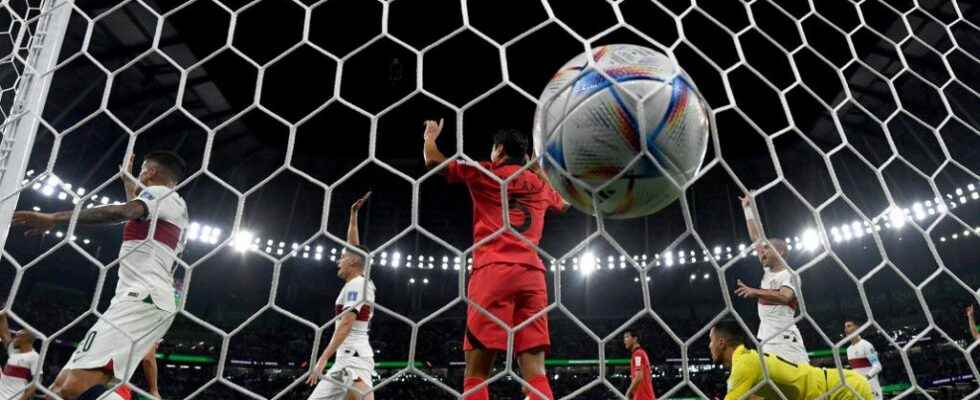It may be the only team not to have missed a minute of the FIFA World Cup in Qatar. The German start-up Kinexon, in partnership with Adidas and Fifa, has developed the ball that passes from foot to foot since the start of the competition. The one that will be used for the last time in the tournament, this Sunday, December 18, during the long-awaited final between France and Argentina, respectively led by Kylian Mbappé and Lionel Messi.
The contribution of Kinexon? The implantation of a small chip of only 7 grams in the heart of the leather baptized for this edition “Al Hilm”. “Kinexon’s xBall is the first ‘sensory’ ball whose center of mass is perfectly balanced and does not interfere with flight characteristics. A crucial aspect for ball tracking to be suitable for in-game use”, explains the company, contacted by L’Express. It then remains very secret about the manufacturing process and the cost of such an object. It refers, for all that is technical, to its numerous explanations present on his blog. The small sensor located at the heart of the ball “tracks its position up to 100 times per second” and allows, thanks to artificial intelligence, to measure in real time the speed and distances traveled by the ball, the precise moments when this was played. All with a precision that can be counted in milliseconds. Antennas installed at the four corners of the field make it possible to collect and use this data in real time. Finally, twelve “hawk-eye” cameras, like those used in tennis, complete the device in order to follow the positions of each player depending on where the leather is. The wirelessly rechargeable chip – no need to take the ball apart – lasts six hours. Enough to cover four football matches; three if they all go to extra time.
From anecdotal to very useful
“For the first time in football history, connected ball data allows everyone involved to determine precisely when and if ball contact has occurred,” Kinexon said. The company was fortunate to have two interesting use cases. The first during the meeting between Uruguay and Portugal. Although unable to determine whether or not Cristiano Ronaldo had touched the ball with his head and therefore scored a goal, Kinexon was able to prove that the Portuguese star had not touched, even by a hair, said balloon. Hard blow for the star. But great proof of effectiveness for Kinexon. Second case, less anecdotal, during the match between Japan and Spain. The second Japanese goal came after the ball flirted with the limits of the field. The chip decided: the leather, for a few millimeters, was well on the ground. The goal – crucial at this time of the competition – was therefore logically validated.
One of the biggest benefits of technology lies mainly in the automation of offside sequences, so controversial in modern football. At the start of the ball, an attacker must never (with rare exceptions) be between the goalkeeper and the last defender. But detecting these violations with the naked eye is sometimes difficult. Video assistance to refereeing (or VAR) provided a first aid. The Kinexon chip now makes it possible to switch to semi-automated offside. And this one has never been missed during the competition. If there were errors, they were entirely human, of interpretation.
A nugget of the IoT (the Internet of Things), Kinexon raised $130 million as part of a fundraiser in the spring for its 10th anniversary. She is now aiming further. The Bavarian company, which first made a name for itself in the football clubs of Hoffenheim and Bayern Munich, is now expanding into the fields of handball and basketball. The chip, in addition to being implemented in the ball, can also be integrated into a jersey in order to monitor performance and prevent injuries. “Coaches, players, referees and supporters can all benefit from ball data. There are many potential use cases in all areas,” said Robert Schmid, marketing of the company. But not only. After football 2.0, Kinexon is ready to tackle industry 4.0. This time to follow production tools, car parts for example. Confidence is essential, of course, after a successful World Cup.
